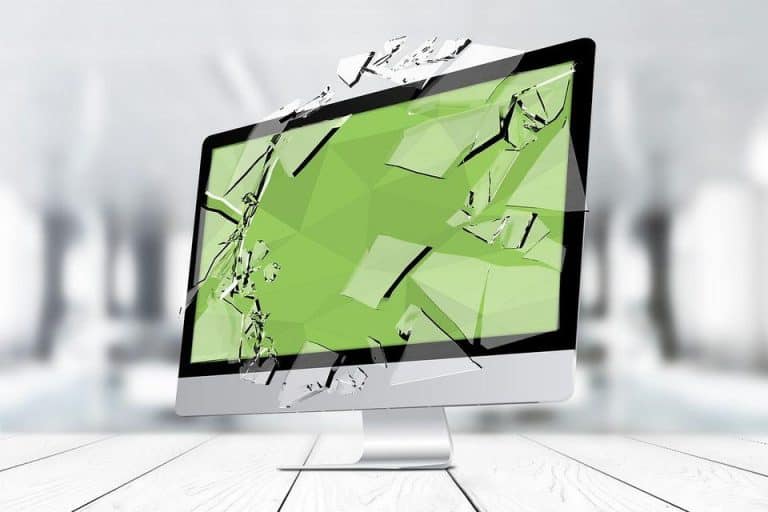How to Fix INVALID_SOFTWARE_INTERRUPT ( 0x00000007) Error?

The error code 0000000×7, also known as the INVALID_SOFTWARE_INTERRUPT,” which has a bug check value of 0x00000007, is a blue screen of death(BSOD) that occurs very rarely. It has been appearing since the days of Windows XP and so forth.
Blue Screen of deaths appears in Windows only when there is some problem. It is a warning signal from your operating system that everything’s not fine like it is supposed to be.
While some BSODs occur due to minor glitches, other frequent ones appear due to a recurring issue that needs to be addressed.
Reasons For the Error
There can be a variety of reasons behind it, either software or hardware.
- Hardware component failure is a common cause of this error. When a component malfunctions, it results in suboptimal software performance as well.
- Device drivers are malfunctioning. This happens when a new device, say, a graphics card is installed into the computer. Appropriate drivers are needed for the card to function bug-free, to its full potential.
- System files have become corrupt due to a variety of reasons.
- A newly installed application is interfering with the general functioning of the operating system.
Some apps function maliciously by design, which may trigger an unconventional response from the system.
Solution #1 Remove the newly installed external device/internal component
Any newly installed internal or external component can be the reason behind the INVALID_SOFTWARE_INTERRUPT error. New drivers may be acting up, or the hardware might be incompatible with the other components.
Try the A-B testing for running the computer if the error persists to determine the root cause.
Remove the newly installed component, first of all, to determine if it’s to blame for the problem.
Solution #2 Run the BSOD Troubleshooter
Windows 10 ships with a built-in troubleshooter for the very scenario we are dealing with. It will list all sorts of BSODs related problems and the issues faced by you. It can also troubleshoot stop code 0x000000f4.
Here is how you open the Windows 10’s BSOD troubleshooter:
1. Head to Settings wizard by simply searching settings from the start menu search.
2. Go straight to the Troubleshoot section of the settings wizard.
3. Select the box which says BSOD and click on Run the Troubleshooter.

4. Follow instructions given in the troubleshooter. It will help in identifying and advising on ways to solve the issue at hand.
Some of the Windows versions do not have the BSOD troubleshooter. They have the Windows Online Troubleshooter for dealing with the blue screen of death.
Moreover, some Windows users have neither of the above. They will first need to enable the Windows Troubleshooting service or download the standalone online troubleshooter.
Solution #3 Run the DISM Scan
DISM is an essential tool provided for issues with the system images, including mounting, ejecting system images and, installing and uninstalling Windows features, products.
The Deployment Image Servicing and Management tool is a command-line based troubleshooter that repairs issues with Windows image management.
– When Windows is able to boot up
After the BSOD has appeared and the system has collected the error data, it usually restarts the computer. When the windows boot up, you should follow the below-given steps to detect the issue at hand while Windows try for various of the common fixes:
1. Open the command prompt in administrator mode by right-click menu.
2. Enter the following command and press ENTER.
| DISM /Online /Cleanup-Image /RestoreHealth |

3. Wait for the scanning process to be completed. It will verify the data and fix any corruption that requires repairing.
If the issues persist, you can try the RestoreHealth option, a more advanced scanning system, and automatically repair the problems.
| DISM /Online /Cleanup-Image /RestoreHealth |
– When Windows is not booting up.
There may arise situations where the Windows does not boot up after the occurrence of a BSOD. In that case, mount the available Windows bootable media and boot from it.
1. Go to Command Prompt via the Troubleshoot PC option in the Windows boot manager.
If the boot manager does not appear on turning on the computer, use the CMD from the Recovery Options of the Windows bootable media.
2. After you have opened up the Command Prompt, type the following commands. Press ENTER individually after each command.
| dism /online /cleanup-image /scanhealth
dism /online /cleanup-image /restorehealth |
3. After the scanning and other processes have been done, type the following and press ENTER.
| DISM /Online /Cleanup-Image /RestoreHealth /source:WIM:C:SourcesInstall.wim:1 /LimitAccess |
The letter “C” in the command denotes the drive letter in which your Windows is installed. Replace it with the drive letter if it’s not the same for your computer.
4. Restart the computer when the process has been completed.
Solution #4 Check the Hard Drives
Corrupted hard drives are a common cause for BSODs, such as the error we are dealing with. Platter based hard drives have the highest failure rate amongst modern storage technologies.
For scanning the hard disks entirely, you will need the Advanced Startup. Here is how you do it.
1. Press the SHIFT key on the keyboard and click on the RESTART option.
2. Head to Troubleshoot > Advanced Options of the Troubleshooting wizard.
3. Find Command Prompt from the list and enter the following commands, pressing ENTER after each of them.
|

Entering these commands will rebuild the boot record(rebuildbcd), fix the master boot record(MBR), and fix all the general boot issues.
While you are at it
Enter chkdsk /r c: in the command prompt after the above process has been completed.
Make sure to replace the letter “C” with all the drive letters.
It will fix logical errors and verify the system integrity of your hard drive.
Conclusion
Blue screens of deaths are inconvenient and often cause hindrance in your flow of work and other stuff that you are doing on your computer. For more solutions, check here.
In the recent versions, Microsoft has started shipping extra tools to ensure a BSOD-free experience, which haunted the users on the earlier Windows.






